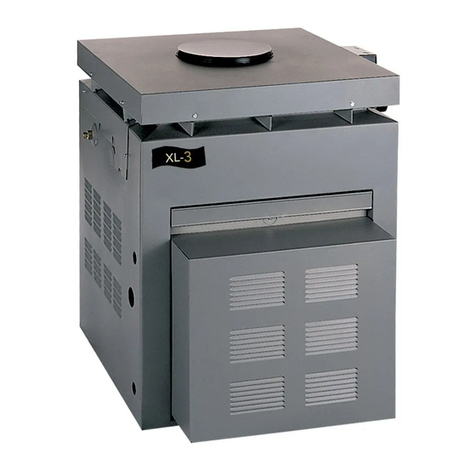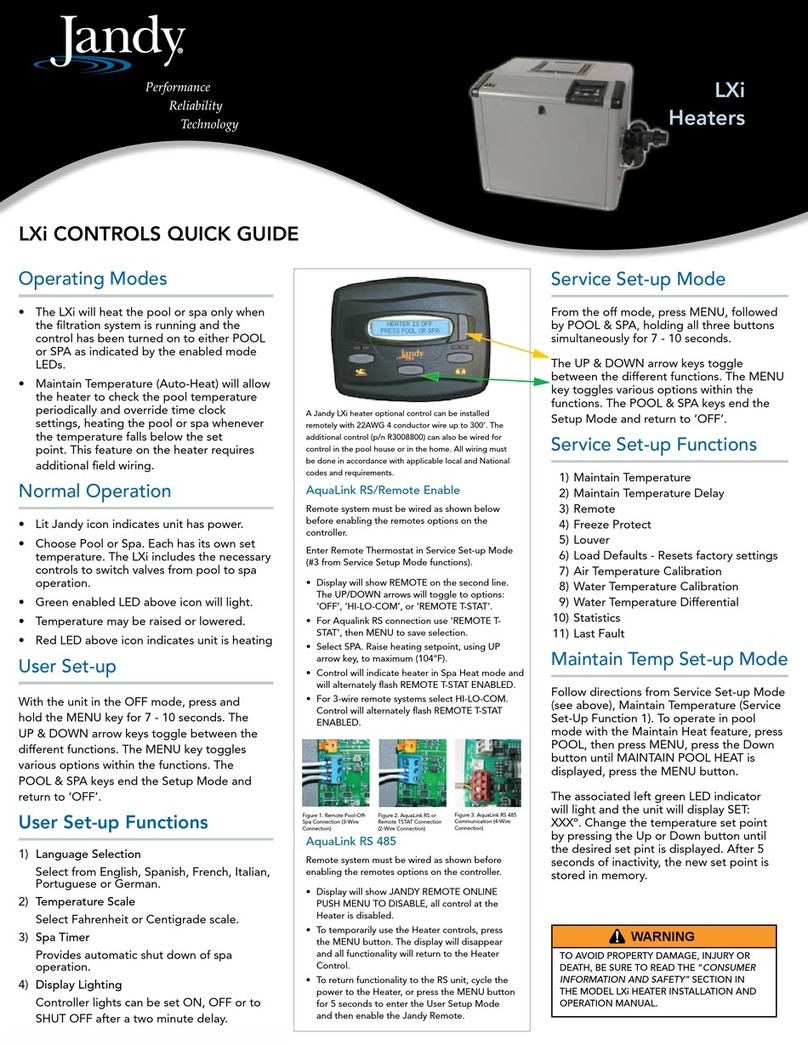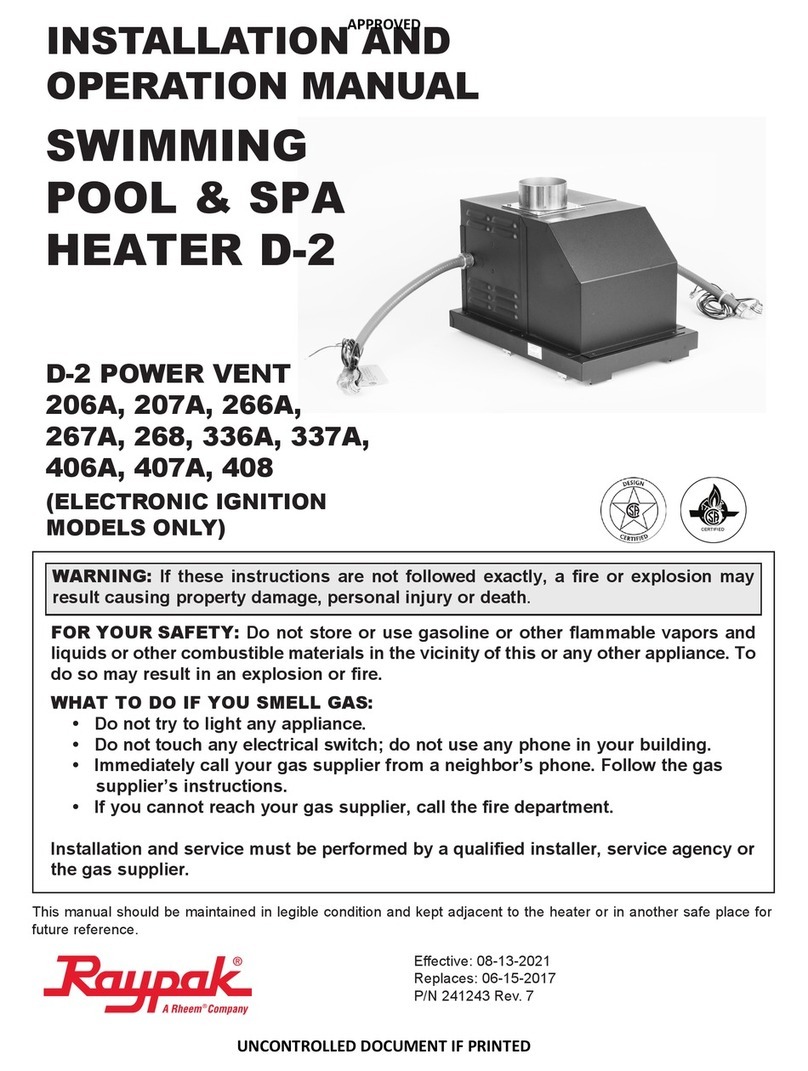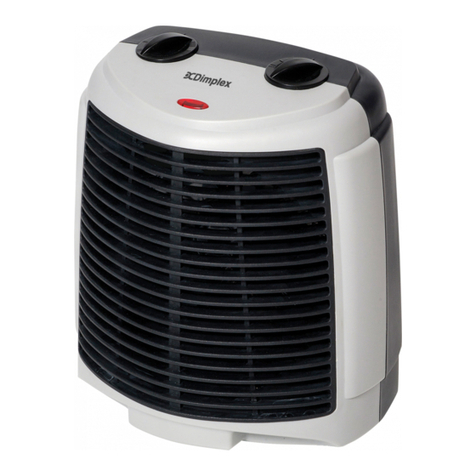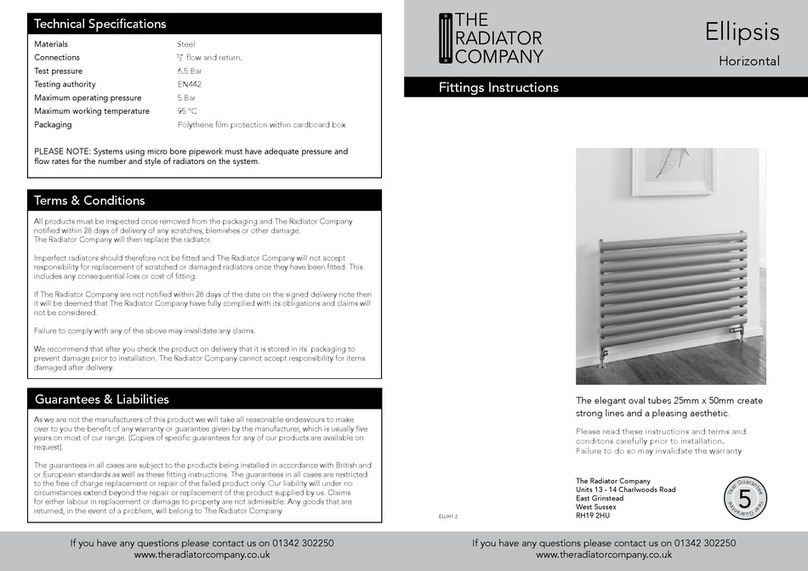Jandy Lite2 User manual


TABLE OF CONTENTS
SECTION 1.
GeneralInformation
1.1 Introduction ................................................... 1
1.2 ConsumerInformationandSatefy.................. 1
1.3 Warranty ....................................................... 2
1.4 CodesandStandards.................................... 2
1.5 TechnicalAssistance .................................... 2
1.6 MaterialsInstallerMustProvide..................... 3
1.7 Specifications................................................ 3
SECTION 2.
InstallationInstructions
2.1 Introduction ................................................... 4
2.2 Field Assembly ............................................. 4
2.3 LocationRequirements.................................. 5
SECTION 3.
Venting
3.1 CombustionAirSupply.................................. 8
3.2 VentPipe SizingandGeneral Installation...... 9
SECTION 4.
Gas Connections
4.1 Gas Supply and Piping .............................. 10
4.2 ManifoldPressure ...................................... 11
4.3 Special Precautions for LP Gas ................. 12
SECTION 5.
Water Connections
5.1 WaterPiping.............................................. 12
5.2 CheckValveInstallation ............................. 13
5.3 AutomaticFlowControlValve .................... 13
5.4 ReversibleWaterConnections ................... 13
5.5 ConnectionsatHeater ............................... 15
5.6 PressureReliefValve ................................. 15
5.7 AuxiliaryComponents,Chlorinators,Ozone
Generators,andSanitizingChecmicals ..... 16
SECTION 6.
Electrical
6.1 MainPower................................................ 17
6.2 Bonding ..................................................... 17
6.3 Auxiliary Time Clock Wiring ....................... 17
6.4 RemoteOperation...................................... 19
SECTION 7.
OperatingInstructions
7.1 NormalOperations ..................................... 19
7.2 Start-Up ..................................................... 19
7.3 LightingandShutdownProcedures ............ 21
7.4 TurningtheHeaterOn/OffandSettingthe
temperaturecontrol .................................... 21
7.5 Water Pressure Switch Adjustment ........... 23
7.6 TemperatureRise....................................... 23
7.7 Adjustingthe Manual Bypass Valve ........... 24
SECTION 8.
Maintenance
8.1 WaterChemistry........................................ 24
8.2 SeasonalCare ........................................... 25
8.3 InspectionandService ............................... 26
SECTION 9.
Troubleshooting
9.1 GeneralHeaterTroubleshooting ................. 28
9.2 TroubleshootingGuide ............................... 28
SECTION 10.
Professional Maintenance Service and
Diagnostic Troubleshooting
10.1 GeneralInformation .................................... 29
10.2 Natural-DraftCombustionSystem .............. 29
10.3 HeaterComponentsandTheirOperation.... 29
10.4 ElectricalTroubleshooting .......................... 30
SECTION 11.
Replacment Parts
11.1 OrderingInformation ................................... 34
11.2 Parts List ................................................... 36
11.3 GeneralExplodedView.............................. 37
11.4 DetailedExplodedView ............................. 38

Model LD Pool and Spa Heater Page1
SECTION 1.
General Information
1.1 Introduction
This manual provides installation and operation
instructions for the Jandy Lite2 Model LD pool and
spa heater. Read these installation and operation
instructions completely before proceeding with the
installation. Consult the Jandy factory, or local factory
representative, with any questions regarding this
equipment.
Certain sections of this manual are specific to
either United States or Canadian installations, and are
labeled as such.
The Lite2 LD heater gets electrical power from
an external 120VAC or 240VAC source and provides
a dual thermostat Flex-Temp control system for pool/
spa combinations or preheat convenience. The Lite2
LD heater also meets the California, New York,
Hawaii, and Oregon state energy requirements for
intermittentignitiongasappliances.
The Lite2 heater is specifically designed for
heating fresh water swimming pools and spas, and
with proper installation and care, they will provide
years of reliable service. Do not use the heater to
maintain pool or spa water temperature below 70°F.
Do not use it as a heating boiler or general service
water heater or to heat salt water. Consult your dealer
for the appropriate Jandy products for these applica-
tions.
1.2 Consumer Information and Safety
The Lite2 Pool/Spa heater is designed and
manufactured to provide many years of safe and
reliable service when installed, operated and main-
tained according to the information in this manual and
the installation codes referred to in later sections.
Throughout the manual safety warnings and cautions
are identified by the " " symbol. Be sure to read and
comply with all of the warnings and cautions.
1.2.1 Spa/Hot Tub Safety Rules
WARNING
Thefollowing“SafetyRulesforHotTubs,”
recommendedby theU.S.Consumer ProductSafety
Commission,shouldbeobservedwhenusingthe
spa.
AVERTISSEMENT
LesRèglementssuivantspourCuvesThermales,tel
querecommandésparla Commission U.S. de
Sécuritédes Produits pourlesConsommateurs,
devraientêtrerespectéslorsdel’utilisation du spa.
WARNING
TheU.S.ConsumerProductSafetyCommission
warnsthatelevatedwatertemperaturecanbe
hazardous.Consultheateroperationandinstallation
instructionsforwatertemperatureguidelinesbefore
settingtemperature.
AVERTISSEMENT
LaU.S.Consumer Product Safety Commission
indiquequedestempératuresdel’eauélevées
peuventêtredangereuses.Voirlanoticed’installation
etdefonctionnementpour leréglage dela
température.
1. Spa or hot tube water temperature should never
exceed 104°F (40°C). One hundred degrees
Fahrenheit (100°F [38°C]) is considered safe for
a healthy adult. Special caution is recommended
for young children.
2. The drinking of alcoholic beverages before or
during spa or hot tub use can cause drowsiness
which could lead to unconsciousness, and
subsequently result in drowning.
3. Pregnant women take note! Soaking in water
above 102°F (38.5°C) can cause fetal damage
during the first three months of pregnancy
(which could result in the birth of a brain-
damaged or deformed child). If pregnant women
are going to use a spa or hot tub, they should
make sure the water temperature is below 100°F
(38°C) maximum.
4. The water temperature should always be checked
with an accurate thermometer before entering a
spa or hot tub. Temperature controls may vary by
as much as 4°F (2°C).
5. Persons with a medical history of heart disease,
diabetes, circulatory or blood pressure problems
should consult their physician before using a hot
tub or spa.
6. Persons taking any medication which induces
drowsiness (e.g., tranquilizers, antihistamines, or
anticoagulants) should not use spas or hot tubs.
7. Prolonged immersion in hot water can induce
hyperthermia.
Hyperthermia occurs when the internal body
temperature reaches a level several degrees above the
normal body temperature of 98.6°F (37°C). Symptoms
includedizziness,fainting,drowsiness,lethargy,andan
increase in the internal body temperature. The effects
ofhyperthermiainclude:

Page2
• Lack of awareness of impending hazard
• Failure to perceive heat
• Failure to recognize need to leave spa
• Physicalinability toleave spa
• Fetal damage in pregnant women
• Unconsciousness resulting in a danger of drown-
ing
1.2.2 Swimming Pool Energy Saving Tips
Jandy Pool Products, Inc. offers the following
recommendations to help conserve fuel and minimize
the cost of operating your pool heater without
sacrificing comfort.
1. The American Red Cross recommends a maxi-
mum water temperature of 78°F (25°C). Use an
accurate pool thermometer. A difference of 4F°
(2C°) , between 78°F and 82°F (26°C and 28°C),
will use as much as 40% more gas.
2. Carefully monitor the water temperature of your
pool in the summertime. You can reduce heater
usage due to warmer air temperatures.
3. Find the proper setting on the pool heater tem-
perature control and use the TEMP-LOK to
discourage further adjustments.
4. Set the filter time clock to start the pump no
earlier than 6:00 AM during the pool heating
season. This is the time when nightly heat loss
balances.
5. If the pool is only going to be used on weekends,
reduce the heater temperature control setting by
8 or 10 degrees during the week. Reset it to the
desired temperature level a day or so before you
plan to use the pool.
6. During the winter or when on vacation for longer
than a week, shut down the heater by following
the shutdown instructions found on the inside of
the heater.
7. Where possible, shelter the pool from prevailing
winds with well-trimmed hedges or other land-
scaping, cabanas, or fencing.
8. Always use a pool cover when practical. Besides
providing a valuable safety feature, a pool cover
will reduce heat loss, conserve chemicals, and
reduce the load on filter systems.
1.3 Warranty
The Lite2 heater is sold with a limited factory
warranty. Details are specified on the back cover of
thismanual.
Make all warranty claims to an authorized Jandy
representative or directly to the factory. Claims must
include the heater serial number and model (this
information can be found on the rating plate), installa-
tion date, and name of the installer. Shipping costs are
not included in the warranty coverage.
The warranty does not cover damage caused by
improper assembly, installation, operation or field
modification. Also, damage to the heat exchanger by
corrosive water, is NOT covered by the warranty. See
Section 8.1 for maintaining proper pool water chemis-
try.
NOTE: Keepthis manual in asafeplace for future
referencewheninspectingorservicingtheheater.
1.4 Codes and Standards
The Jandy Lite2 pool and spa heater is design
certified by CSA (Canadian Standards Association) as
complying with the latest edition of the “Standard for
Gas Fired Pool Heaters”, ANSI Z21.56 in the USA
and CAN-4.7 in Canada.
All Jandy heaters must be installed in accordance
with the local building and installation codes as per
the utility or authorities having jurisdiction. All local
codes take precedence over national codes.
In the absence of local codes, refer to the latest
edition of the following national codes for installation:
1. In the United States, “The National Fuel and Gas
Code”, ANSI Z223.1/NFPA-54. Pay special
attention to the section covering, “Venting of
Equipment”.
2. In Canada, “The Natural Gas and Propane
Installation Code”, CAN/CSA-B149.1.
Any changes to the heater, gas controls, gas
orifices, wiring, draft diverter, or improper installation
may void the warranty. If change is required to any of
the above, consult the factory.
1.5 Technical Assistance
Consult Jandy Pool Products, Inc. or your local
Jandy distributor with any questions or problems
involving the specifications, installation, and operation
of your Jandy equipment. An experienced technical
support staff is ready to assist you in assuring the
proper performance and application of Jandy prod-
ucts. For technical support call the Jandy Products
Technical Service Department at (707) 776-8200
extension 260.

Model LD Pool and Spa Heater Page3
1.6 MaterialsInstallerMust Provide
1.6.1 Materials For All Installations
The following items are needed and are to be
supplied by the installer for all Lite2 heater installa-
tions:
1. The correct size gas pipe to supply gas from the
meter to the heater (see Section 4.1 for correct
gas pipe size).
2. A manually operated gas valve to be installed in
the gas line outside of the heater.
3. A suitable gas union joint to connect the heater
to the gas line.
4. Plumbing items needed to provide a sediment
trap (drip leg) in the gas line between the manual
gas valve and the union to the heater (see
Section 4.1).
5. The appropriate wiring and conduit to supply the
heater with either 115V or 230V, 60Hz electrical
power.
1.6.2 Materials For Special Installations
In addition to the items listed above, the follow-
ing items are needed for special applications.
1. A factory authorized draft hood and vent pipe for
indoor installations in the USA and outdoor
shelter installations in Canada (see Section
3.2.2). Draft hoods are available from any Jandy
distributor.
2. Primer and cement suitable for cementing CPVC
pipe to PVC pipe and an appropriate coupling for
connecting the factory supplied CPVC pipe
nipples to PVC pool plumbing.
3. A non combustible platform for installation on
combustible surfaces (see Section 2.3.3). Non
combustible bases are available from your Jandy
distributor.
4. A factory approved vent cap for all outdoor
installations where wind conditions may cause
downdrafting. Vent caps are available from your
Jandydistributor.
1.7 Specifications
1.7.1 General Specifications
1. InstallationLocation.
Certified for use:
In the USA:
Natural Gas: Indoor and Outdoor
LP Gas: OnlyOutdoor
In Canada:
NaturalGas: Outdoor Shelter and Outdoor
LP Gas: Outdoor Shelter and Outdoor
2. Minimum Clearance From Combustible Mate-
rial:
See Table 2 in Section 2.3.2
3. *Gas Pipe/Heater Gas Valve Connection.
Natural Gas: 3/4" NPT
LP Gas: 3/4" NPT
*For diameter of gas line from meter to heater see
Table 3 in Section 4.1.
4. Supply Gas Type.
Certified for use with:
Natural Gas or Liquefied Petroleum Gas (LP
Gas or Propane Gas).
5. Inlet Gas Supply Pressure.
Minimum Maximum
Natural Gas: 5.5 "WC 10.0 "WC
LP Gas: 10.0 "WC 14.0 "WC
6. Water Pipe/Heater Connection†.
Threaded Unthreaded
Iron Pipe 2" NPT 1 1/2"*
Copper Pipe 1 1/2" or 2"*
Plastic 2" NPT** 2"
† Connections shown here are common sizes. Other sizes
may be connected (see Sections 5.5 for details).
* Unthreaded 1 1/2" pipe or 2" pipe maybe used with special
seals included with this heater.
** Threaded 2" CPVC nipples are supplied with the
heater for connecting 2" PVC pipe.
7. Flow Rate:
Maximum: 125 gpm (475 lpm)
Minimum: 30 gpm (110 lpm)
8. Maximum Working Water Pressure:75 psi
9. Exhaust Vent Connection Size: See Figure 1 in
Section 1.7.2, "Dimensions".
10. Electrical:
SupplyVoltage 115 VAC or 230 VAC
Hz 60
Amp < 5
Secondary Volts 24 VAC

Page4
11. Modification of Heater for High Altitude:
The Jandy Lite2 model LD heater is normally
shipped from the factory in the low altitude (sea
level)operationalconfiguration. Whenrequested,
the heaters can be configured and shipped for
higher altitudes. For field conversions to change
altitudeconfigurations,manifoldkitsformid
altitudes and high altitudes are available from
your Jandy pool products dealer or by contacting
the Customer Service Department at (707) 776-
8200 extension 245. See Section 11, “Parts List”,
of this manual for the correct kit number for the
manifold assembly needed for your altitude.
Table 1 defines the altitude designations as
described by the “Standard for Gas Fired Pool
Heaters”, ANSI Z21.56 in the United States and
"Gas Fired Appliances For Use At High Alti-
tudes", CAN 1-2.17 in Canada.
1.7.2 Dimensions
See Figure 1 (following page) for a diagram
showing the heater's exterior dimensions and dimen-
sions to critical connections on the heater.
SECTION 2.
Installation Instructions
WARNING
Improperinstallationormaintenancecancause
nauseaorasphyxiationfromcarbonmonoxideinflue
gases which could result in severe injury, or death.
Forindoor installations, asanadditional measureof
safety, Jandy Pool Products, Inc. strongly
recommendsinstallationofsuitableCarbon
Monoxide detectors in the vicinity of this appliance
and in any adjacent occupied spaces
AVERTISSEMENT
Uneinstallationouunentretieninadéquatpeut
causer la nausée ou l’asphyxie en raison du
monoxyde de carbone présent dans les gaz de
combustionetmêmeentraînerdesblessuresgraves
ou la mort. Pour les installations intérieures, comme
mesuredesécuritéadditionnelle,JandyPool
Products,Inc.recommandefortementl’installationde
détecteurs de monoxyde de carbone près de cet
appareil ainsi que dans les espaces adjacents
occupés.
2.1 Introduction
Install the Lite2 heater, vent caps and drafthoods
in accordance with the procedures in this manual, local
codes and ordinances, and in accordance with the
latest edition of the appropriate national code (see
Section 1.4 "Codes and Standards").
All gas-fired products require correct installation
Table 1. Altitude Designations for the Lite2 Heater.
to assure safe operation. The requirements for pool
heatersincludethefollowing:
1. Fieldassembly (if required)
2. Appropriate site location (clearances) and
flooring
3. Sufficient combustion and ventilation air
4. Properly sized gas meter and piping
5. Proper electrical wiring
6. Adequate water flow
This manual provides the information needed to
meet these requirements. Review all application and
installation procedures completely before continuing
the installation.
2.2. Field Assembly
The Lite2 heater is shipped from the factory with
the top assembly in the low-profile configuration for
outdoor installation. The Lite2 heater is design certi-
fied for indoor installation (U.S. only) when equipped
with a drafthood, which must be installed without
modification.
The Lite2 heater is also certified for installation
in an outdoor shelter in Canada when equipped with a
drafthood. An outdoor shelter is an enclosure not
normally occupied which does not communicate
directly with occupied areas.
Check the rating plate on the heater or the Parts
List (Section 11) of this manual for the correct Jandy
drafthood or vent cap part number. See instructions
supplied with the drafthood or vent cap for installation
and attachment. When the drafthood is used, locate
the heater so as to be in the same atmospheric pres-
sure zone as the combustion air inlet to the heater.
ALTITUDE UNITED CANADA
DESIGNATION STATES
LOWALTITUDE 0-3000 FT 0-2000 FT
(0-610 m)
MIDALTITUDE 3001-6000 FT 2001-4500 FT
(611-1370 m)
HIGHALTITUDE 6001-10,000 FT NOT
APPLICABLE
LP
LOWALTITUDE 0-5000 FT 0-4500 FT
(0-1370 m)
HIGHALTITUDE 5001-10,000 FT NOT
APPLICABLE
NATURAL GAS

Model LD Pool and Spa Heater Page5
Figure 1. General Configuration.
* Ratings shown are for both natural and propane gas.
Venting Dimensions
Model Heater U.S. Indoor or Firing Rate / Hr.*
Width Vent Outdoor CAN Outdoor (1,000's)
Diameter Dim "H" Shelter Dim "H"
in (cm) in (cm) in (cm) in (cm) BTU (kcal)
LD125 15 (38) 5 (13) 17 3/8 (44) 16 1/4 (41) 125 (32)
LD175 18 (46) 6 (15) 18 (46) 24 1/8 (61) 175 (44)
LD250 22 1/2 (57) 7 (18) 18 1/4 (47) 25 1/4 (64) 250 (63)
LD325 26 3/4 (68) 8 (20) 18 7/8 (48) 26 1/2 (67) 325 (82)
LD400 31 3/4 (81) 9 (23) 21 1/2 (55) 27 1/2 (70) 400 (101)
2.3 Location Requirements
2.3.1 Introduction
CAUTION
Whenpool equipment is located below the pool
surface, a leak from any component can cause large
scale water loss or flooding. Jandy Pool Products,
Inc. cannot be responsible for such water loss or
floodingorresultingdamage.
ATTENTION
Lorsque l’équipement d’une piscine est situé sous la
surfacedel’eau,unefuiteprovenantden’importe
quelélémentpeutcauseruneperted’eauimportante
ou une inondation. Jandy Pool Products, Inc. n’est
pasresponsabledespertesd’eau,desinondations
oudesavaries causées par une installation ou un
entretieninadéquat.
The Jandy Lite2 LD heater may be installed
indoors or outdoors as outlined in later sections.
Location of the heater below or above the pool water
level affects operation of its water pressure switch.
See sections on water piping and heater start-up for
moreinformationaboutthis.

Page6
Avoid placing the heater in locations where it can
cause damage by water or condensate leakage. If this
is not possible, provide a suitable drain pan to catch
and divert any leakage. The pan must not block natural
flow of air around the heater.
All criteria given in the following sections reflect
minimum clearances as stated in the national stan-
dards. However, each installation must also be evalu-
ated taking into account the prevailing local conditions
such as wind speed and direction, proximity and
height of walls that may block ventilation or cause
down drafts, and proximity to public access areas.
2.3.2 Clearances
The heater must be placed to provide clearances
on all sides for maintenance and inspection. There
must also be minimum distances maintained from
combustible surfaces (see Table 2).
At least 20" (500mm) access must be available in
front of the heater for burner removal.
If the heater is to be installed in a garage, or
similar structure, all burners and burner ignition
devices must have a minimum 18" (457mm) clearance
above the floor.
2.3.3 Flooring
The heater shall be installed on a level floor of
noncombustible construction or on fire-resistant slabs
or arches. Noncombustible flooring is defined as
flooring material and surface finish not capable of
being ignited and burning and with no combustible
materials against the underside. Acceptable materials
are those consisting entirely of a combination of steel,
iron, brick, tile, concrete, slate, glass or plaster. Do
not install the heater directly on a combustible wood
or carpet floor without placing a noncombustible
platform between the floor and the heater.
The heater can be installed on a combustible
floorif a noncombustible base assembly, available
from Jandy, is used. See the heater rating plate or the
Parts List (Section 11) of this manual for the appropri-
Note: Clearances listed in Table 2 are
manufacturer's tested values. These are
given as minimum values. Where local
and national codes apply, and values
are different than those listed in Table
2, use the greater value to ensure safe
operation.
* Refers to side opposite piping
** A closet with no door
(InUS-18in(46cm) clearance,
InCanada-24in(61cm)clearance)
ate base part number. Heaters must never be
installed directly on carpeting.
As an alternative to the Jandy noncombustible
base plate, in the United States, the National Fuel Gas
Code allows a heater to be placed on a combustible
surface when there is a platform under the heater
made of hollow masonry no less than 4 inches (102
millimeters [mm]) thick, covered with sheet metal at
least 24 gauge thick and extending beyond the full
width and depth of the heater by at least 6 inches (152
mm) in all directions. The masonry must be laid with
ends unsealed, and joints matched to provide free
circulation of air from side to side through the masonry
(see Figure 2). If the heater is installed in a carpeted
alcove, the entire floor of the alcove must be covered
bya noncombustible panel.
Table 2. Minimum Heater Clearances From Combustible Surfaces
Table 2. Dégagements Minimaux à Assurer Entre les Parois de L'appareil et les Constructions Combustibles
Figure2. Non-CombustiblePlatform.
Notes:
1. Blocks must provide solid base and be braced so they
cannot slip out of place.
2. Air openings in blocks must be arranged to provide
unrestricted opening through entire width or length of
base.
SIDEOF INDOOR(OUTDOORSHELTER) OUTDOORINSTALLATION
HEATER INSTALLATION
INCHES CENTIMETERS INCHES CENTIMETERS
BLANK* 6 15 6 15
REAR 6 15 6 15
PIPING 12 30 12 30
TOP 44 112 OPENUNROOFEDAREA
FRONT ALCOVE** ALCOVE** OPEN OPEN

Model LD Pool and Spa Heater Page7
2.3.4. Outdoor Installation
Lite2 heaters can be installed in the low-profile
top configuration as received from the factory, or with
an optional high wind vent cap.
Locate the heater in an open, unroofed area.
Do not install the heater under a deck.
Do not locate the heater below or adjacent to any
doors,glassopenings,louvers,grills,etc.,which
connect in any way with an inhabited area of a
building, even though the access might be through
another structure (e.g., a garage or utility room). In the
United States there must be a minimum of four (4)
feet (1.22 m) horizontally or four (4) feet (1.22 m)
vertically between the heater exhaust point and any
door, glass opening,or gravityinlet toa building.In
Canada, the heater must be installed so that the
exhaust point of the heater is at least ten (10) feet (3.0
m) from any building opening (see Figure 3).
WARNING
UnitedStates
Do not install the heater with the top of the vent
assembly within 4 feet (1.22 m) horizontally and 4
feet(1.22 m) vertically ofanyopening into a building.
Canada
Do not install the heater with the top of the vent
assembly within 10 feet (3.05 m) of any opening into
abuilding.
AVERTISSEMENT
Lorsquevousinstallezl’appareildechauffage,
assurez-vousquel’ouvertured’aérationsetrouveàun
minimumde10pieds(3,05m)de touteouverture
d’unbâtiment.
The top surface of the heater must be at least
three (3) feet above any forced air inlet, or intake
ducts located within ten (10) feet horizontally.
If the heater is installed under an overhang, there
must be a minimum clearance of 5 feet (1.5 m) above
the top of the heater and the structure should not
overhang the heater more than 12 inches (0.30m). The
area under the overhang must be open on three sides.
This prevents combustion gases from being diverted
into living areas through doors, windows, or gravity
inlets.
Ne pas installer ce chauffe-piscine sous une
saillie mesurant moins de 5 pi de hauteur. La partie
sous la saillie doit être ouverte sur 3 côtés.
If the heater is installed close to a structure,
protect it from rain water runoff with rain gutters on
the roof or other measures. Do not locate the heater
near irrigation sprinkler systems that could spray water
on it. Water from sprinklers may cause damage to
controls and electronic components.
Avoid locations where wind deflection off nearby
structures might cause downdraft conditions. Where
downdraft conditions exist, locate the heater at least 3
feet (0.91 m) from vertical surfaces (e.g., nearby
buildings and walls). The addition of a vent cap may be
necessary.
In Florida it is required that the heater be se-
curely fastened to the equipment pad. Use a size 1/4"
x 1-1/2" long stainless steel Tapcon®type concrete
screws and washers at each of the four tabs located at
the base of the heater. Mounting the appliance in this
manner meets the applicable requirements of the
FloridaBuildingCode.
Mounting screws are not provided with this
heater. After placing the heater on the equipment pad,
drill a hole in the concrete at each of the four tabs on
the feet of the heater. (The correct size drill bit is
usually provided with the concrete screws when
purchased.) Place a screw in each of the holes and
fasten the heater to the equipment pad (see Figure 4).
Do not over torque the screws.
Figure 3. Outdoor Heater Installation.
Figure4. AnchorHeaterToEquipmentPad

Page8
2.3.5. Indoor and Outdoor Shelter
Installations
An outdoor shelter (Canada only) is an unoccu-
pied enclosure which does not communicate directly
with occupied areas. All indoor installations and
outdoor shelter installations require the addition of a
factory approved drafthood. The drafthood must be
installedwithoutmodificationand inaccordancewith
alllocal, state, provincial and nationalcodes.
Une remise extérieure (au Canada seulement)
est un endroit inoccupé qui ne communique pas
directement avec les endroits occupés. Toutes les
installations intérieures et remises extérieures exigent
l’addition d’une coupe-tirage intérieur approuvée par
le manufacturier. La coupe-tirage intérieur doit être
installée sans aucune modification et selon les
exigences fournies par le manufacturier.
These codes, standards and Jandy Pool Products,
Inc. require that the heater be properly vented as
outlinedin this manual.Proper ventilation ofexhaust
and combustion air are essential for the safe and
efficient operation of the heater (See Section 3). An
approved draft hood may be purchased from your local
Jandy distributor. See Section 11 (Parts List) of this
manual for the correct part number for you model and
size heater.
SECTION 3.
Venting
3.1. Combustion Air Supply
The heater location must provide sufficient air
supply for proper combustion and ventilation of the
surrounding area as outlined in the latest edition of
ANSI standard Z223.1 or in Canada, CAN/CSA-
B149.1, and any local codes that may be applicable.
In general, these requirements specify that the
room in which a heater is installed should be provided
with two permanent air supply openings; one within
12 inches (305mm) of the ceiling, the other within 12
inches(305mm)ofthefloor.Allindoorinstallations
must have openings to outside air for combustion,
ventilation,and dilutionofflue gasesfrom insidethe
building (see Figure 4 and Table 3). Jandy Pool
Products, Inc. does not recommend indoor installations
that do not provide combustion air from outside the
building.
Alloutdoorshelterinstallations(Canadaonly)
must have uninterrupted openings to outside air for
combustionandventilation.Theinstallationmustbein
accordance with the latest edition of CAN/CSA-
B149.1. Jandy Pool Products, Inc. does not recom-
Table 3. Air Openings to Outside.
Required Net Free Open Area*
for Combustion Air Openings
Direct from outside Duct from outside
Model in2(cm2)in
2(cm2)
125 32 (206) 64 (413)
175 44 (284) 88 (568)
250 63 (406) 126 (813)
325 82 (429) 164 (1058)
400 100 (645) 200 (1290)
*Area indicated is for one of two openings; one at floor level
and one at the ceiling, so the total net free area would be
double the figures indicated. For special conditions, refer to
NFPA54/ANSI Z223.1. In Canada refer to the National
Standard CAN/CSA-B149.1 which differs from this table.
Note: If using screens and/or metal louvers, compensate by adding
50% additional area to each opening
If using wood louvers each opening must be at least four times
the area indicated in the table above.
Notes:
1. An Underwriters' Laboratories or equivalent Nationally Recognized Testing Laboratory listed vent cap is required to
prevent downdraft and allow the heater to function properly and safely.
2. Use approved roof jack.
Figure 4. Indoor Installation Venting (USA), or Outdoor Shelter (Canada).

Model LD Pool and Spa Heater Page9
mend outdoor shelter installations that depend on
internalair for combustion. Combustion airshould be
ducted to the heater from outside the structure.
Outside Air Supply: When combustion air is
supplieddirectlythrough an outsidewall,each opening
should have a minimum free area of one square inch
per 4,000 BTU/h (1.2kW) input of the total input rating
of all appliances in the enclosed area. If air is provided
through horizontal ducts, each opening and duct must
provide one square inch of flow area for each 2000
BTU/h (0.6 kW). These requirements are summarized
in Table 3. Note that the areas specified are net free
areas and should be increased by 50 percent when the
openings are covered by screens, louvers, grills or
other protective covers (see Figure 4 and Table 3).
Note:InCanada,followCanadianStandard,CAN/
CSA-B149.1or local codes.
Exhaust Fans or Vents: Any equipment which
exhausts air from the room where the heater is
installed can deplete the combustion air supply or
reverse the natural draft action of the venting system.
This could cause flue products to accumulate in the
room. Additional air must be supplied to compensate
for such exhaust.
The information in Table 3 is not applicable in
installations where exhaust fans or blowers of any type
are used. Such installations must be designed by
qualifiedengineers.
If a blower or fan is used to supply air to the
room, the installer should make sure it does not create
drafts which could cause nuisance shutdowns of the
pilot. The heater must be completely isolated and
protected from any source of corrosive chemical
fumes such as those emitted by trichlorethylene,
perchloroethylene,chlorine,etc.
WARNING
Do not store any chemicals, cleaners, or other
corrosivematerialnearcombustionairopeningsorin
theroom.Avoid locating dryer vents in the vicinity of
combustionairopenings.Failuretopreventcorrosive
materials from mixing with combustion air can result
inreducedheaterlifeandunsafeheateroperation.
AVERTISSEMENT
N’entreposeraucunproduitchimique,produit
nettoyantouproduitcorrosifàproximitédesbouches
d’air de combustion ou dans la pièce. Éviter de
placerdestuyaux de ventilation poursécheuseà
proximité des bouches d’air de combustion. Le fait
delaisser des matières corrosives se mélanger à l’air
de combustion risque de réduire le cycle de vie de
l’appareildechauffageetdecompromettreson
fonctionnement.
3.2 Vent Pipe Sizing and General
Installation
3.2.1. Outdoor Installations
Foroutdoorinstallations,exhaustventingconsid-
erations will determine the placement of the heater
(See Section 2.3.4). If the heater cannot be placed so
as to meet the requirements stated in Section 2.3.4, a
vent pipe and cap may be added to the heater to move
the exhaust vent opening to a position that complies
with the requirements. When the heater is installed in
areas of high wind or when unavoidably installed near
a vertical obstruction where downdrafting may occur,
it may be desirable to add a vent cap directly to the top
of the heater. In all cases, vent pipes and caps must be
of the same diameter as the exhaust outlet of the
heater. Approved vent caps may be obtained through
yourJandydistributor.
3.2.2. Indoor and Outdoor Shelter
Installations
WARNING
Vent pipe diameter must be as required by the
NationalfuelGasCodeANSIZ223.1ortheCanadian
InstallationCodesforGasAppliancesCAN/CSA-
B149.1.Undersizepipecanresultininadequate
ventingandoversizepipecanresultinvent
condensation. In either case the result can be
releaseofcombustionproductstotheindoors.This
can cause serious injury or death by carbon
monoxidepoisoningorasphyxiation.
AVERTISSEMENT
Lediamètredestuyauxdeventilationdoitrépondre
aux exigences du National FuelGas Code ANSI
Z223.1ouducode canadien des installations des
appareilsàgazCAN/CSA-B149.1. Des tuyaux trop
petitsrisquentd’entraîneruneventilationinadéquate
etdestuyauxtropgrosrisquentdeprovoquerune
condensation dans les tuyaux. Dans un cas comme
dans l’autre, des produits de combustion risquent de
s’échapper dans le bâtiment et causer des blessures
gravesoul’asphyxieparlemonoxydede carbone.
Allindoorinstallationsandoutdoorshelter
installations require the addition of a factory approved
drafthood. The drafthood must be installed without
modification.
All vent installations must be made in accordance
with all local, state or provincial codes and with:
1. Thesection covering"Venting of Equipment"in
the national Fuel Gas Code, ANSI 223.1 latest
edition,orthe applicableprovisionsof the local
buildingcodes.
2. In Canada, The Natural Gas and Propane
Installation Code CAN/CSA-B149.1 applies.

Page10
Avoid long horizontal runs of the vent pipe, and
90° elbows, reductions and restrictions. Horizontal runs
should have at least a 1/4 inch rise per foot (20mm
per meter) in the direction of flow.
Avoid terminating heater vents near air condition-
ing or air supply fans. The fans can pick up exhaust
flue products from the heater and return them inside
the building, creating a possible health hazard.
Do not locate the vent terminal where flue
productscouldstrikeagainst buildingmaterialsand
cause degradation.
Vent opening should be well away from trees or
other obstructions that would prevent free air flow to
and from vent terminal. Do not terminate the vent
under decks, stairways, or car ports.
Be sure to support all venting so that connections
will not separate and so that the weight of the vent
pipe does not rest on the heater draft hood. All con-
nections should be made with rustproof sheet metal
screws. Do not weld or fasten the vent pipe to the
heater draft hood. The draft hood and heater top must
be easily removable for normal heater service and
inspection.
The draft hood outlet is to be connected to an
unobstructed vent pipe of the same diameter, terminat-
ing outside the building. The vent must terminate at
least two (2) feet (0.61 m) above the highest point of
the roof or other object that is within ten (10) feet
(3.05 m) of the vent termination. The vent pipe must
have a listed vent cap which allows a full equivalent
opening for flue products (see Figure 4). The top of
the vent cap must be at least five feet in vertical height
above the drafthood outlet.
Type “B” double wall or equivalent vent pipe is
recommended. However, single wall metal vent pipe
may be used as specified in the latest edition of the
National Fuel Gas Code ANSI Z223.1 or in Canada
CAN/CSA-B149.1
IMPORTANT NOTE: Donotusesheetmetalscrews
at the snap lock joints of Type B gas vents.
Whenventingmultipleappliancesthroughone
common duct, each appliance must have it’s own vent
temperature limit switch. All vent limit switches must
be wired in series so as to prevent any appliance from
firing in the event of a blocked vent. Refer to ANSI
Z223.1 or, in Canada, to CAN/CSA-B149.1 for more
informationonmultipleventing.
SECTION 4.
Gas Connections
4.1 Gas Supply and Piping
Review the following general instructions before
continuingtheinstallation.
WARNING
TheLite2pooland spaheaters aredesigned foruse
with either natural gas or LP gas. Check the rating
plate on the inner panel to be sure that the heater is
configured to use the type of gas being supplied. DO
NOTATTEMPTTOCONVERTTHISHEATERFOR
USEWITHANYOTHERTYPEOFFUEL.
AVERTISSEMENT
Les appareils de chauffage à Lite 2 pour piscines et
cuvesthermalessontconçus pour être utilisés avec
dugaznaturel ou du gaz de pétroleliquéfié(GPL).
Vérifiezl’informationinscrite surlaplaque
signalétiquedupanneauintérieurpourvousassurer
quel’appareilestconfigurépourletypedegaz
fourni.NEPASESSAYERDECONVERTIRCET
APPAREILÀUNAUTRETYPEDEGAZ.
1. Gas piping installation must be in accordance
with the latest edition of ANSI Z223.1 and all
local codes. In Canada, the installation must be
in accordance with CAN/CSA-B149.1 and all
local codes that apply.
2. Check the gas supply to be sure that it is the
same as the gas indicated on the heater’s rating
plate. Jandy Lite2 LD heaters, as shipped from
the factory, are certified to operate within the
altitude range indicated on the rating plate. If a
field conversion to a different altitude range
should be necessary, manifold kits are available
for changing the altitude range of the heater. See
Table 1 in section 1.7.1 of this manual to deter-
mine the correct altitude designation for your
heater. Refer to Section 11 “Parts List” to order
the correct part number of the manifold kit
needed. When changing the altitude range of the
heater, be sure to fill out the altitude conversion
label, included in the kit. Apply the label on the
inner panel of the heater, next to the original
rating plate.
CAUTION
Permanentdamage to thegas valve willoccurif the
followingproceduresarenotfollowed.
ATTENTION
Vousendommagerez la soupape degazsi vous ne
respectezpaslesprocéduressuivantes.
3. Use the figures in Table 4 to size the gas inlet
piping from the gas meter to the heater. Check
alllocal codes for compliance beforeinstalling
the heater.

Model LD Pool and Spa Heater Page11
4. Install a sediment trap (drip leg) ahead of the gas
controls (see Figure 5). Fit the trap with a
threaded cap which can be removed for cleaning.
5. Install a manual gas shutoff valve for service and
safety. Do not use a restrictive gas cock. DO
NOT USE FLEXIBLE GAS PIPING, it will
restrict the gas flow to the heater.
6. Disconnect the heater and its individual shutoff
valve from the gas supply system during pressure
testing of the system at pressures higher than 1/2
pounds per square inch (psi) (3.45 kilopascals
[kPa]). If the test pressure is equal to or less
than 1/2 psi (3.45 kPa), close the manual shutoff
valve on the heater during the piping pressure
test.
7. If the gas supply pressure is less than required,
check for undersized pipe between the meter and
the heater, a restrictive fitting, or an undersized
Figure 5. The proper design for a sediment trap/drip leg.
Supply Pressure Minimum Maximum
Natural Gas 5.5 Inches WC 10.0 Inches WC
(1.4 kPa) (2.5 kPa)
LP Gas 10.0 Inches WC 14.0 Inches WC
(2.5 kPa) (3.5 kPa)
Manifold Pressure Nominal
Natural Gas 4.0 Inches WC (1.0 kPa)
LP Gas 9.0 Inches WC (2.2 kPa)
Table 5. Gas Supply Pressure RequirementsTable 4. Natural Gas Pipe Size Requirements*
Distance from Gas Meter
0-50 feet 50-100 feet 100-200 feet
Heater (0-15 m) (15-30 m) (30-60 m)
Size in. (mm) in. (mm) in. (mm)
125 3/4 (19) 1 (25) 1 (25)
175 1 (25) 1 (25) 1-1/4 (32)
250 1 (25) 1-1/4 (32) 1-1/4 (32)
325 1-1/4 (32) 1-1/4 (32) 1-1/2 (38)
400 1-1/4 (32) 1-1/2 (38) 1-1/2 (38)
Notes:
*1.Thesenumbersarefornaturalgas(0.65Sp.Gr.)and are
based on 1/2 inch (13mm) water column pressure drop.
Checksupplypressurewithamanometer,andlocalcode
requirements for variations. For liquefied petroleum gas,
reduce pipe diameter one size, but maintain a 3/4 inch
(19mm) minimum diameter.
2.Check supply pressure and local code requirements
before proceeding with work.
3.Pipe fittings must be considered when determining gas
pipe sizing.
gas meter. Gas supply pressures to the heater
are listed in Table 5.
NOTE: Themaximuminletgaspressuremustnot
exceedthespecifiedvalue.Theminimum value
listed is for the purpose of input adjustment. Refer to
Table5.
8. Before operating the heater, test the complete
gas supply system and all connections for leaks
using a soap solution. Do not use an open flame.
CAUTION
Some leak test solutions (including soap and water)
may cause corrosion or stress cracking. Rinse the
pipingwith waterafter testing.
ATTENTION
Certaines solutions d’essai d’étanchéité (y compris
l’eauetlesavon)peuvent causerde lacorrosionou
de la fissuration. Rincez les tuyaux à l’eau après
l’essaid’étanchéité.
4.2 Manifold Pressure
Confirm that gas supply pressure is correct. If the
gas supply pressure is less than required, check for
undersized pipe between the meter and the heater, a
restrictive fitting, or an undersized gas meter. Gas
supply pressures to the heater, when it is operating, are
listed in Table 5.
CAUTION
Manifoldgas pressureforthe Lite2 Dnaturalgas
heaters should be set at 4" WC. Propane heaters
should be set to 9" WC.
ATTENTION
La pression du collecteur de pression pour les
systèmesdechauffage augaznatureldevraitêtre de
4'’ WC. Pour les sytèmes de chauffage au gaz
propanedevraitêtrede9'’WC.

Page12
of pool heaters in enclosed areas such as pits is not
recommended. However, if such an installation is
required be sure to pay special attention to proper
ventilation for LP gas. Locate heaters a safe distance
from LP gas cylinders and filling equipment. In the
United States, consult the "National Fuel Gas Code"
(NFPA 54 / ANSI Z223.1, latest edition) or in Canada,
the "Natural Gas and Propane Installation Code"
(CAN/CSA-B149.1), and any local codes and fire
protection authorities about specific installation
restrictions in your area.
SECTION 5.
Water Connections
5.1 Water Piping
Figure 6 illustrates typical piping for pool
equipment in pool/spa combination pools.
For normal installations, do not install a shutoff
valve or any kind of variable restriction in the water
piping between the heater outlet and the pool/spa. In
special installations where a shut-off valve, diverter
valve or other variable restriction is required in the
plumbing between the heater outlet and the pool, Jandy
Pool Products, Inc. recommends the installation of a
pressure relief valve on the heater (see Section 5.6).
Arrangement of pool system components other
than as illustrated in these diagrams can affect the
operation of the heater’s water pressure switch.
The manifold pressure may be checked by
connecting a manometer to the pressure port on the
outlet side of the valve. You will need to remove the
1/8" NPT protective plug form the port and install the
appropriate 1/8" NPT fitting to connect your manom-
eter. The pressure will be zero when the heater is not
running. When the heater is operating the manifold gas
pressure should be 4.0" WC for natural gas heaters
and 9.0" WC for LP gas heaters.
To adjust the manifold gas pressure, first remove
the slotted cap on the top of the gas valve to the right
of the control knob. Under the slotted cap is a slotted
plastic screw which increases the manifold pressure
when turned clockwise and decreases the manifold
pressure when turned counterclockwise.
After measurements, and adjustments if neces-
sary, have been made, make sure to replace the 1/8"
NPT plug on the manifold pressure ports, and the cap
on the manifold pressure adjustment screw. It is
extremely important to replace these parts before
leaving the installation. Failure to do so can result in
damage to property or injury or death.
With the heater firing, the pressure must be
within the range shown in Table 5. Also check the
pressure with the heater off.
4.3 Special Precautions for LP Gas
LP Gas is heavier than air and can therefore
more readily collect or “pool” in enclosed areas if
provisionforproperventilation isnotmade.Installation
Note: When using metal pipe as heat sink, join metal and PVC/CPVC, using metal male and PVC/CPVC female connection.
Figure 6. Typical installation.

Model LD Pool and Spa Heater Page13
Location of the heater above or below the pool water
surface can also affect operation of the switch. In
general, the pressure switch can be adjusted to accom-
modate this effect if the heater water connections are
no more than six feet below the pool water surface
and no more than 15 feet above it. See instructions for
pressure switch adjustment (Section 7.5) in the heater
start-up section of this manual for more information
about this.
Note that when pool equipment is located below
the pool surface a leak can result in large scale water
loss or flooding. Jandy Pool Products, Inc. cannot be
responsible for such water loss or flooding or the
damage caused by it.
For special installations such as water connec-
tions below the water level of the pool, or for other
questions contact the Jandy Technical Service depart-
ment at (707)-776-8200 ext 260.
5.2 Check Valve Installation
The heater must be protected from back-siphon-
ing of water, which can result in dry starts. If there is
any chance of back-siphoning, provide a check valve
between the pool and the filter pump inlet.
When an automatic chemical feeder is installed
in the plumbing, it must be installed downstream of
the heater (see Section 5.7). A check valve must be
installed between the heater and the chemical feeder
to prevent back-siphoning of chemically saturated
water into the heater where it will damage the compo-
nents.
5.3 Automatic Flow Control Valve
The inlet/outlet header of the Lite2 comes
equipped with an automatic flow control valve. The
automatic flow control valve maintains the proper
flow through the heater at rates up to approximately
125 Gallons Per Minute (GPM) (474 liters per minute
[LPM]). If the filter system flow rate is higher than
approximately 125 GPM (474 LPM), install a manual
bypass valve (see Figure 6), then perform a tempera-
ture rise test (see Section 7.6) and adjust the flow
using the bypass valve until the proper temperature
rise is obtained.
5.4 Reversible Water Connections
Jandy Pool Products, Inc. ships the Lite2 heater
with the water connections on the right side. The Lite2
heater can be installed with the water connections on
either side. It could be necessary, or helpful, to switch
the connections to the left side to improve access for
installationandservice.Performthis modification
before installing the heater using the following proce-
dures:
Figure 7. Heat exchanger reversal.
1. Remove heater door.
2. Remove all 8 hex-head screws fastening the top
and lift the top assembly straight up (see Figure
7).
3. Remove rainshield assembly and set it aside.
4. Remove screws that fasten the gap closures to
the jacket and put them aside. Remove gap
closures.
5. Remove the screws securing the two flue
collector hold down clamps and remove the
clamps (see Figure 8). Remove flue collector.

Page14
Figure 11. Heat exchanger and end baffles.
6. Remove the three rubber jacket/plug grommets
and drain plugs (see Figure 7). One is located
under the water connections on the right side.
The other two are on the left side of the heater.
7. Tag and disconnect the white wire on the
pressure switch (PS) and the white wire on the
Fireman's switch terminal which leads to the high
limitswitch.
Figure 9. Temperature sensing bulb.
Figure 10. Vestibule covers.
Figure8. Fluecollectorhold-downbrackets.
8. Remove plastic tie wraps and pull the white
wires out of the front compartment through the
vestibule cover and coil them on the heat ex-
changer.
9. Unscrew the brass compression fitting securing
the pressure switch to the inlet/outlet header.
Remove tube from header and gently bend it out
of the way.
10. Loosen the screw securing the temperature
sensing bulb retainer bracket. Slide the retainer
bracket off the bulb flange and remove the bulb
from the header (see Figure 9). Pull pressure
switch tube through the hole in the vestibule
cover and into the vestibule (controls compart-
ment), then pull thermostat bulb assembly
through same hole (see Figure 10).
11. When removing the heat exchanger from the
heater, the end baffles of the heat exchanger
(installed only on sizes 125 BTU, 175 BTU and
250 BTU) must be removed. There are two
baffles covering part of the front and rear tubes
of the heat exchanger. Each baffle is held in

Model LD Pool and Spa Heater Page15
place by two screws which mount to the top of
the combustion chamber wall. Remove the
screws and the baffles before attempting to lift
the heat exchanger out of the heater (see Figure
11).
CAUTION
It may be necessary to have help lifting the heat
exchangerout andreplacingit.
ATTENTION
Ilpeutêtrenécessaired’avoirbesoind’aidepour
enleveretremplacerl’échangeurdechaleur.
12. Lift the heat exchanger assembly out of the
heater. Reinstall heat exchanger 180 degrees
(inlet/outlet header left) from it's original posi-
tion.
13. After replacing the heat exchanger into the
heater, the end baffles must be replaced. Each
one is held in place by two screws which mount
to the top of the combustion chamber wall.
Reinstall the baffles on the front and rear of the
heat exchanger before continuing with the
"Reversible Water Connections" procedure.
14. Remove pressure switch retainer (plastic cable
clamp) from the inner panel (allow pressure
switch to float).
15. Reroute the pressure switch tube and thermostat
bulb assembly through hole in left side of
vestibule cover in reverse order.
16. Reinstall the temperature sensing bulb in the
header, and fasten it with the retainer bracket
and screw.
17. Reinstall the compression fitting at the end of the
pressure switch tube into inlet/outlet header and
tighten the fitting.
18. Route the white wiring from the high limit
switches beside the heat exchanger and down to
the original location following the pressure
switch tubing. Secure white wires to the pressure
switch tube with plastic wire ties.
19. Connect the white wire labeled PS to the pres-
sure switch and the other white wire to its
original location on the Fireman's switch.
20. Reinstall the drain plugs and tighten securely.
Replace jacket/plug grommets.
21. Install the flue collector assembly. Be sure the
front and rear panels of the flue collector are
installed into the grooves on the front and rear
combustion chamber heat shield panels. Be sure
the sheet metal panels are not pinching any
wires.
22. Attach the flue collector hold down clamps to the
clips located under the two center header bolts.
23. Replace the gap closures and tighten the screws
securely.
24. Double-check to make sure the wiring is not
pinched against sharp edges, or resting on the
flue collector assembly.
25. Reinstall rainshield assembly.
26. Replace the top assembly. Make sure the tabs are
outside the heater jacket. Fasten the top assem-
bly with the hex-head screws.
27. Install plastic tie wraps on wiring in the vestibule
(controls compartment).
28. Install heater door.
5.5 Connections at Heater
The heater has 2" NPT universal header cou-
plings. You can connect threaded 2" NPT iron pipe,
unthreaded 1 1/2" iron or copper pipe or unthreaded 2"
copper pipe using the appropriate seals included with
this heater (see Figure 12). However, by installing the
appropriate pipe adapters, other sizes may be used.
Plastic piping (PVC Schedule 40) can be con-
nected to the heater if local codes allow it, by using
the CPVC nipples included with your heater.
To install plastic piping (see Figure 13):
1. Remove CPVC nipples from plastic bag.
2. Screw CPVC nipples into metal flange until
tight, using Teflon™ tape on plastic threads.
3. Prepare the end of the pipe with the proper
adapter, PVC/CPVC primer and glue. Follow the
manufacturer’s instructions provided with the
primer and glue for preparation procedures and
curingtimes.
5.6 Pressure Relief Valve
A pressure relief valve (PRV) is recommended
inallinstallationsandismandatoryinanyinstallationin
which the water flow can be shut off between the
heater outlet and the pool/spa.

Page16
A pressure relief valve is not supplied with the
heater. However, it may be required by local codes.
The pressure rating of the valve should be at or below
the lowest working pressure of any component in the
filter system. Any pressure relief valve installed must
comply with provisions of the Standard described in
ANSI Z21.22 for the United States, or CSA 4.4 in
Canada.
To install a pressure relief valve, do the follow-
ing:
1. Remove the 3/4 inch (19 mm) brass plug located
on the top of the inlet/outlet header (see Figure
14).
2. Install the pressure relief valve in the threaded
hole from which the plug was removed.
3. Be sure that the exhaust port of the PRV is
plumbed so that any hot water is directed safely
away from any public areas and away from any
area occupied during servicing.
5.7 Auxiliary Components, Chlorinators,
Ozone Generators, and Sanitizing
Chemicals.
The Lite2 heater is manufactured with materials
that are not compatible with high concentrations of
ozone, chlorine, bromine, or other sanitizing chemi-
cals. Heater damage caused by excessive chemicals or
improper ozonization is not covered by the Jandy Pool
Products, Inc. warranty. Be sure to adhere to the
following:
• When ozone is injected upstream of the heater,
install an offgas mixing chamber, or an ozone
bypass system between the heater and the ozone
injector to prevent ozone and air from entering
the heater.
Figure13.Plasticpipingconnections.
Figure 14. Thermometer and pressure relief valve.
Figure12.Pipinginstallation.
S0028100FOR
1 1/2" PIPE
(R0336000)

Model LD Pool and Spa Heater Page17
• When chemical feeders are used, plumb the
feeder downstream of the heater and install an
in-line check valve between the heater and the
feeder (a minimum of 18" is required between
the heater and the check valve).
• Never deposit chemicals directly in the pool
skimmer.
SECTION 6.
Electrical
WARNING
ELECTRICALSHOCKHAZARD.Thisheater
containswiring that carrieshighvoltage. Contact with
these wires may result in severe injury or death.
AVERTISSEMENT
POSSIBILITÉDECHOCSÉLECTRIQUES.Ce
systèmede chauffage contientdufilage de haut
voltage. Un contact avec ces fils peut résulter en des
blessures sérieuses ou la mort.
WARNING
Labelallwirespriortodisconnectionwhenservicing
controls.Wiring errors cancauseimproper and
dangerousoperation.Verifyproperoperationafter
servicing.
AVERTISSEMENT
Aumomentde l'entretien des commandes,étiquetez
touslesfilsavantdelesdébrancher.Des erreurs de
câblagepeuvententraînerunfonctionnement
inadéquatetdangereux.S'assurerquel'appareil
fonctionneadéquatementusefoisl'entretienterminé.
WARNING
Ensure that power is turned off at the source circuit
breakerbeforeattemptinganyservicetothe
appliance.
AVERTISSEMENT
Assurez-vousque le courant estcoupéau
disjoncteurdesourceavantd’essayern’importequel
serviceàl’appareil.
Wiring connections must be made exactly as
shown in the wiring diagram found on the inside of the
heater (see Figure 16, following page). The heater
must include a definite means of grounding.
6.1 Main Power
The heater comes factory-wired intended for
use with 240 Volt, 60 Hz AC field electrical
supply. To use 120 Volt, 60 Hz AC requires
rewiring of the heater. This should be done by a
certified electrician only, as with all wiring. To wire
the heater for 120 Volt, 60 Hz AC, follow the alternate
120VwiringmethoddepictedinFigure6.Additionally,
the ignition control module must be rewired. The wire
from the terminal marked IGN/240 must be removed
from that terminal and placed on the terminal marked
IGN/120.
Electrical wiring must be in accordance with the
latest edition of the National Electric Code (NEC),
ANSI/National Fire Protection Association (NFPA)
70, unless local code requirements indicate otherwise.
In Canada, the Canadian Electric Code (CEC), CAN/
CSA C22.1 applies.
To wire the Lite2 model LD heater to a
120V or 240V /60 Hertz (Hz) electrical source:
1. Remove the screw located to the lower right side
of the transformer and open the hinged cover of
the wiring enclosure.
2. Connect the wires from the power source to the
leads on the right side of the heater in the space
behind the ignition control (see Figure 8). Be sure
to follow the wiring diagram on page 7 to config-
ure the transformer for the correct input voltage.
3. Attach the ground wire to the green ground
screw located on the back panel of the wiring
enclosure.
4. Close the cover of the wiring enclosure and
replace the screw to hold it in place.
NOTE: No external junction box is required.
6.2 Bonding
CAUTION
This heater must be connected to a bonding grid with
a solid copper wire not smaller in diameter than 8 ga.
ATTENTION
L’appareildechauffagedoitêtreconnectéàunegrille
de mise à la terre par un fil de cuivre d’un diamètre
de calibre minimal 8.
The National Electrical Code and most other
codes require that all metallic components of a pool
structure,includingreinforcingsteel,metalfittingsand
above ground equipment be bonded together with a
solid copper conductor not smaller than a number 8
wire. The heater, along with pumps and other such
equipment must be connected to this bonding grid. A
special labeled bonding lug is provided on the right side
of the heater to accommodate this requirement.
6.3 Auxiliary Time Clock Wiring
If you install a time clock to control the filter
pump operation, it is recommended that the time clock
have its own low voltage (Fireman’s) switch to turn
off the heater before turning off the pump. The switch
should shut off the heater about 15 minutes before the
filter pump shuts off. This will allow for a more
efficient operation by removing any residual heat
contained in the heat exchanger back to the pool.
To install a time clock auxiliary switch into the
heater wires (see Figure 15):

Page18
Figure16. LDConnection/SchematicWiringDiagram
Table of contents
Other Jandy Heater manuals
Popular Heater manuals by other brands

Radialight
Radialight LITHO Installation and operating manual

Powrmatic
Powrmatic PTUL 25 Installation and operation instructions
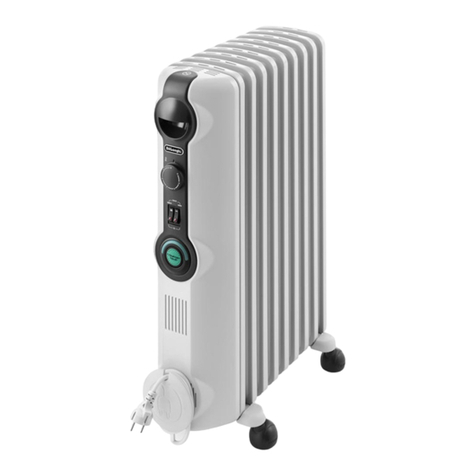
DeLonghi
DeLonghi TRRS0920C quick start guide
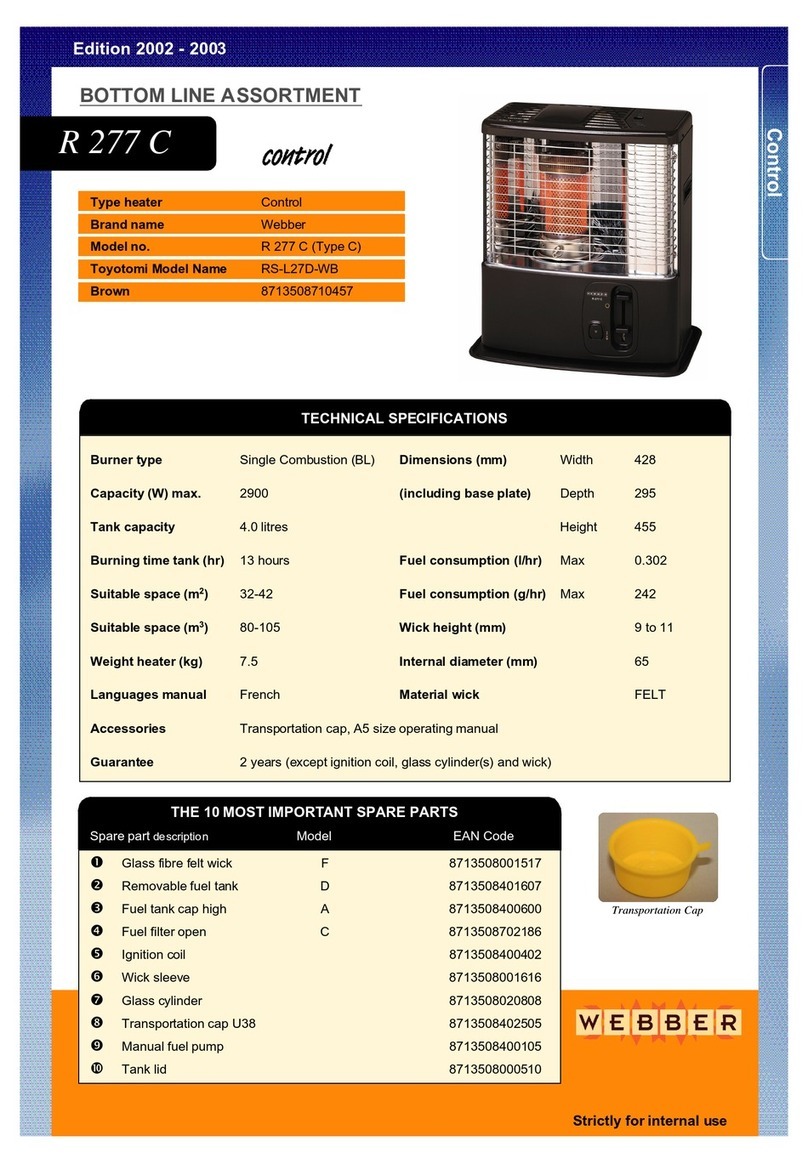
Webber
Webber R 277 C datasheet

Stingray
Stingray ST-OH1001A user manual
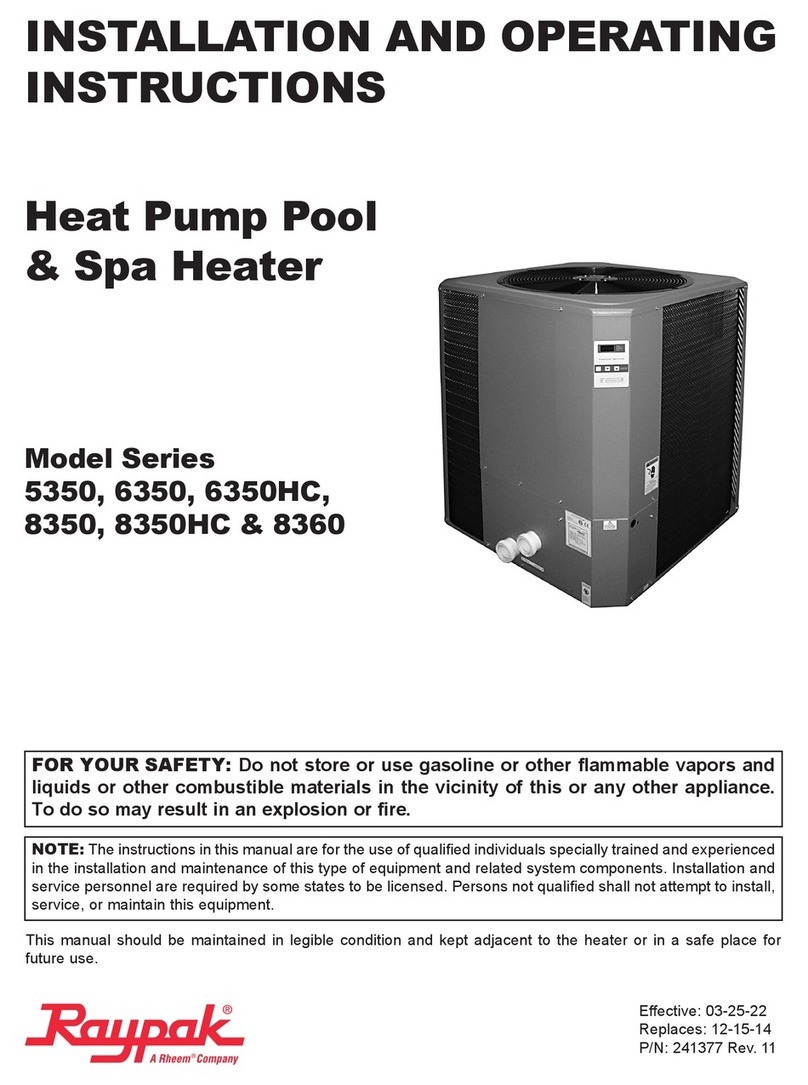
Raypak
Raypak 5350 Series Installation and operating instructions
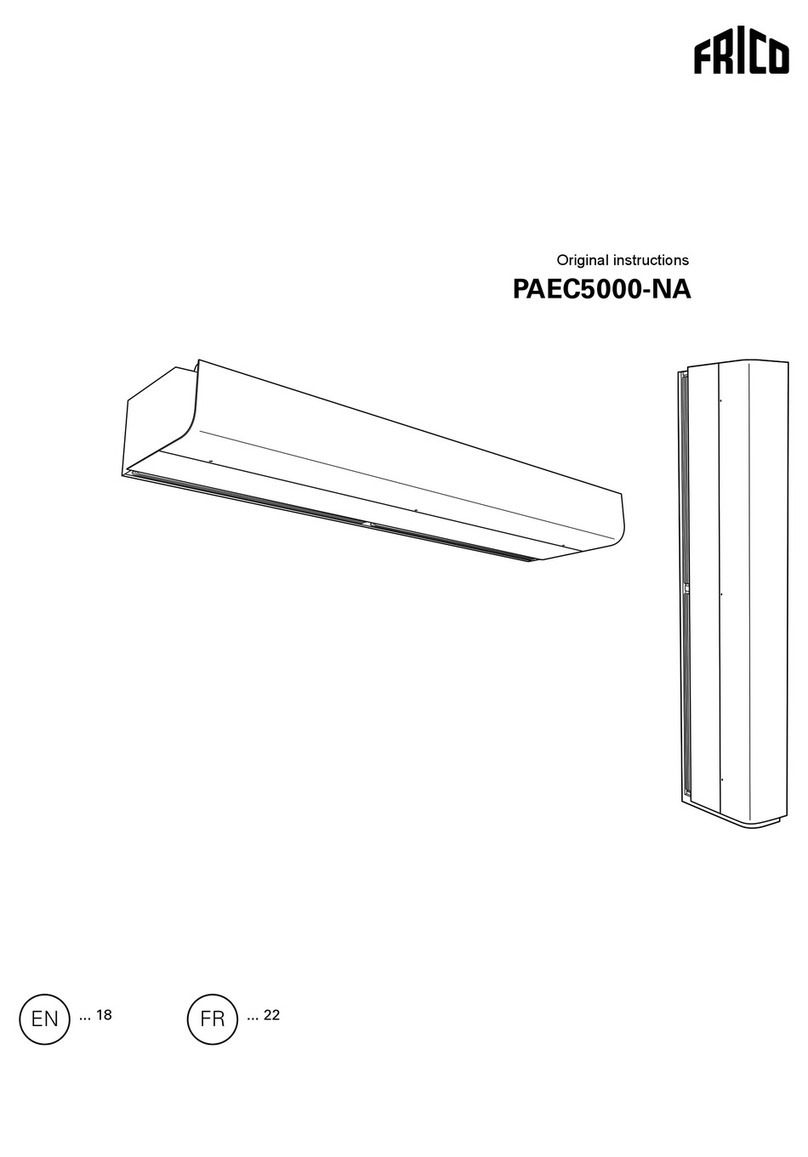
Frico
Frico PAEC5000-NA Series Original instructions

Viessmann
Viessmann VITOPLANAR EI2 installation instructions
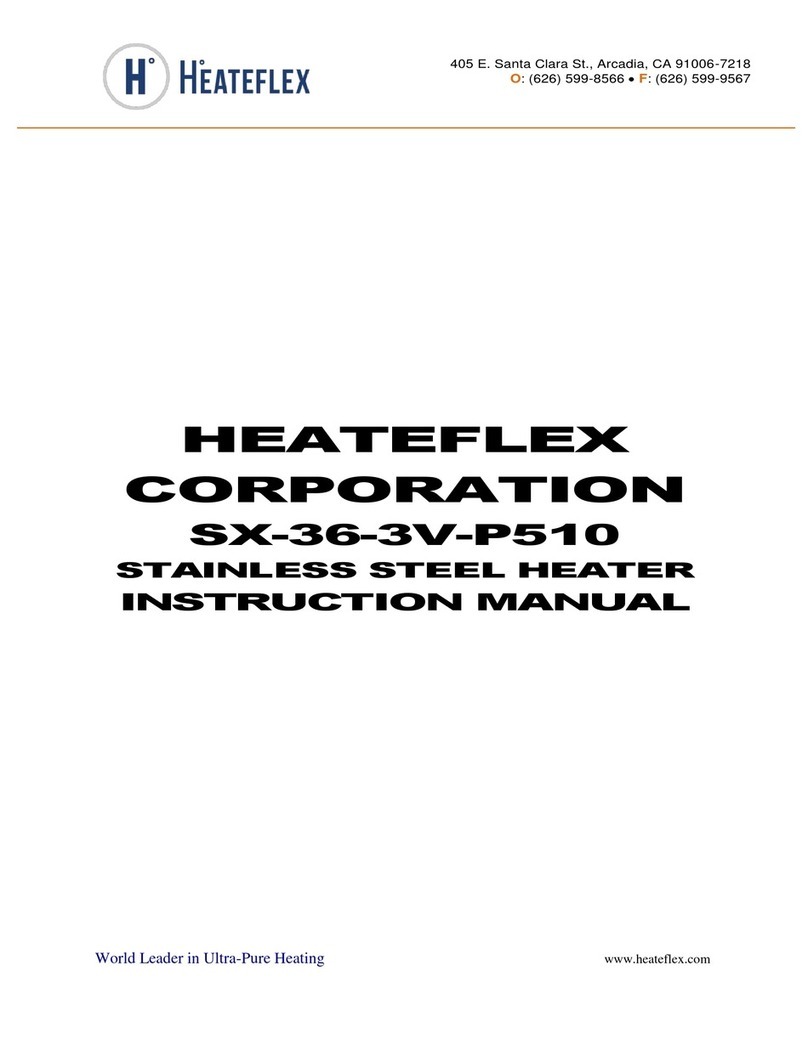
Heateflex
Heateflex SX-36-3V-P510 instruction manual

Vornado
Vornado VH102 owner's guide

Linea 2000
Linea 2000 Domo DO7349H Instruction booklet
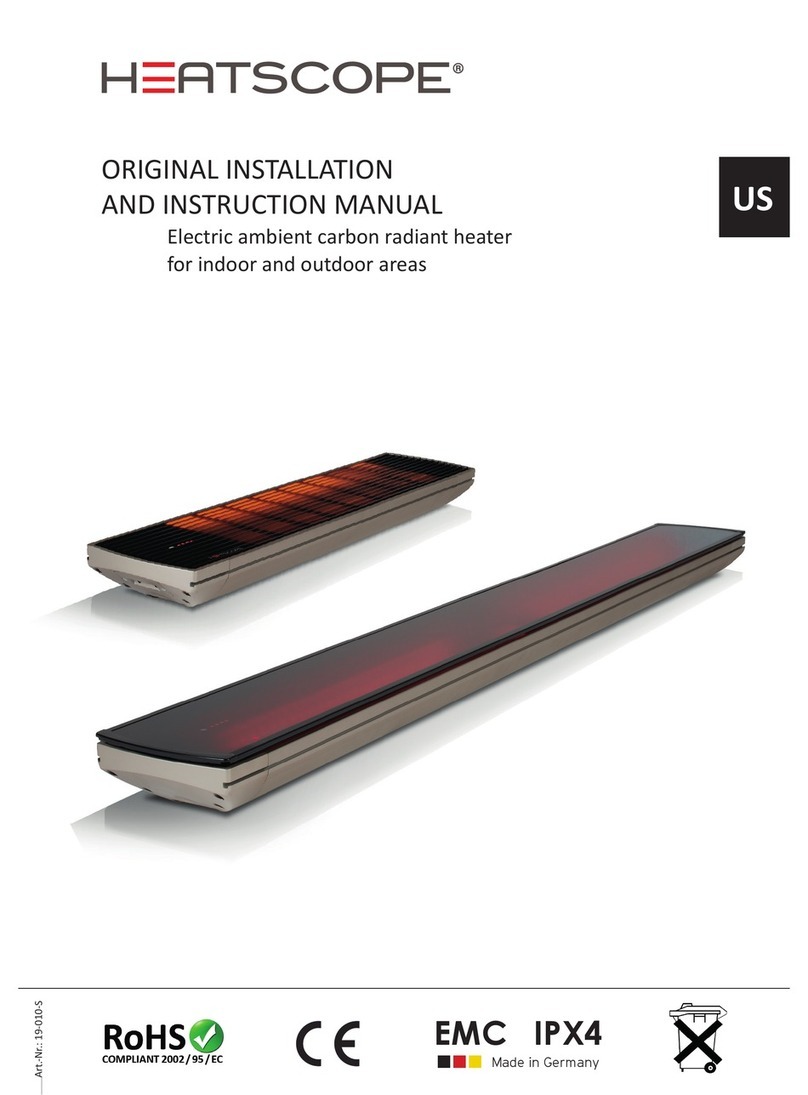
Heatscope
Heatscope MHS-SM2200BK.200 Original installation and instruction manual
